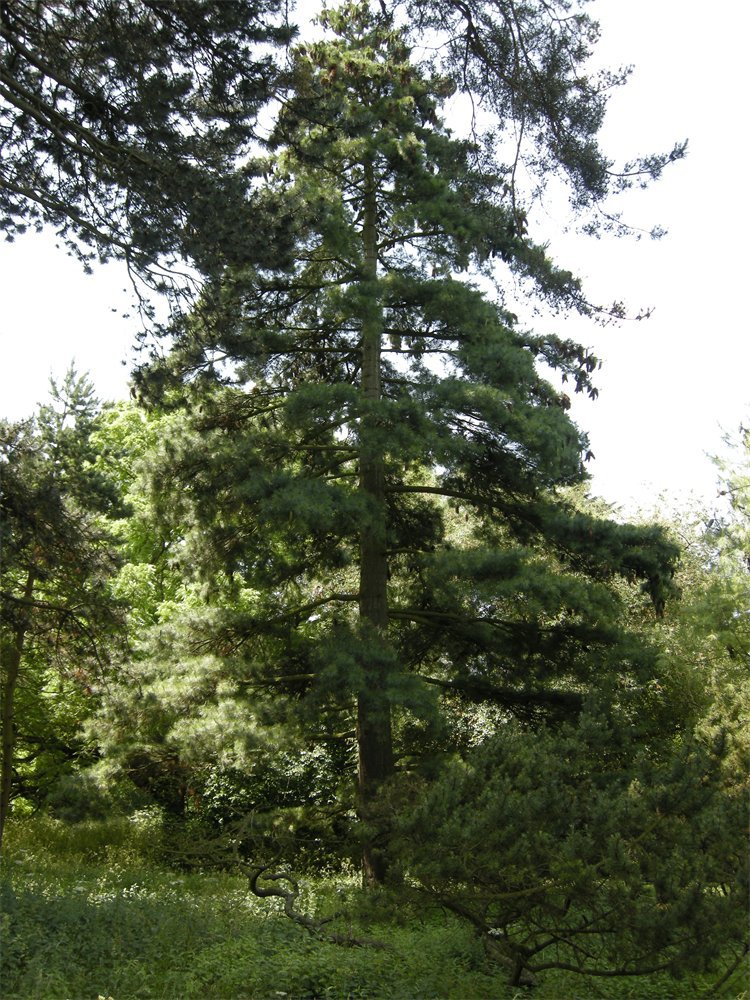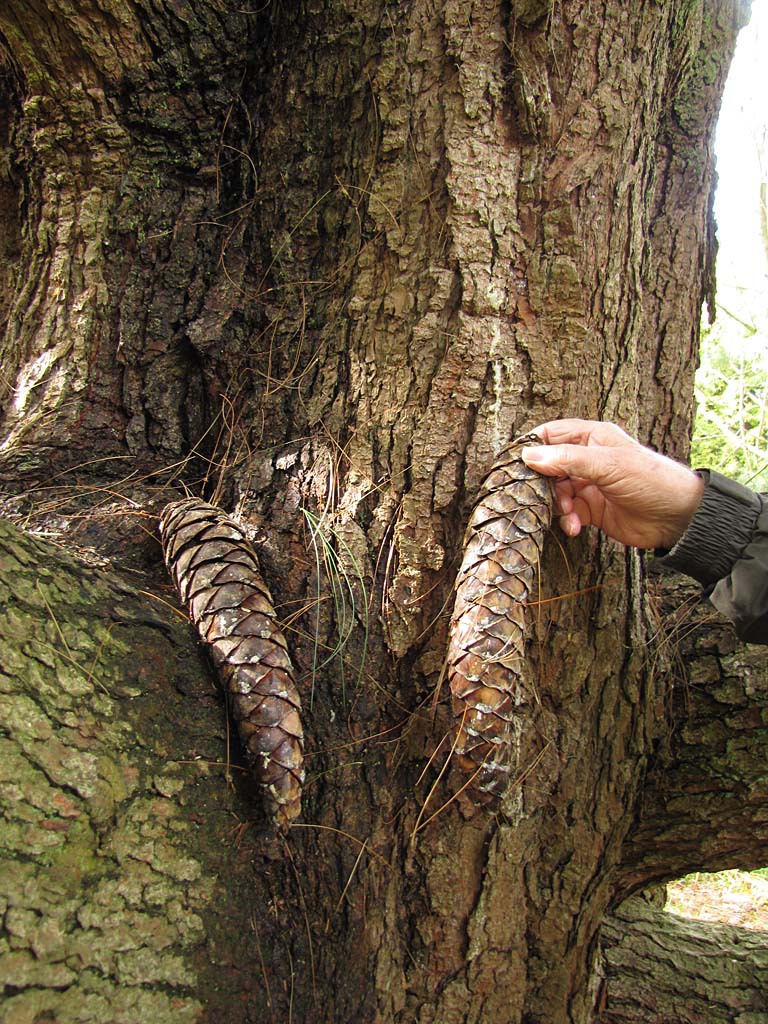Pinus × holfordiana, as described in 1933 by Albert Bruce Jackson (1876-1947), is commonly known as Holford pine, named for the founders of Westonbirt Arboretum, United Kingdom where this hybrid was first created.
Description. Holford pine is a spontaneous garden hybrid that has also been deliberately made between two widely separated tropical mountain species of typical white pine (subsection Strobus), namely Mexican white pine (Pinus ayacahuite) and Himalayan white pine (Pinus wallichiana). The original trees were derived from seed of Mexican white pine. The reciprocal hybrid has proven very difficult to make, in deliberate attempts to cross the species.
It is a very fast growing tree, with annual growth often extending 20 to 24 inches (50 - 60 cm), growing with a more open habit than either parent. The general appearance is more similar to the Himalayan white pine, but many of the detailed features are closer to those of Mexican white pine.
- Bark is orange-brown, much brighter than the dark bark of Mexican white pine.
- Twigs are hairy as in those of Pinus ayacahuite.
- Needles are longer as seen in Pinus wallichiana.
- Seed cones are variable among individual trees. Although they are usually broader than those of Himalayan white pine, they are sometimes as slender but then lack its 'œbanana' shape, having a sharper tip. Given that the seed parent of the original hybrids was a tree of P. ayacahuite var. veitchii, the seed scales strongly angled back. This trait was completely lacking in the hybrid offspring, which have straight scales.
- Seed body, at 0.28 to 0.4 inch (7 - 10 mm) long, is at the upper size range of Pinus wallichiana and the lower range of Pinus ayacahuite. The seed wing is about the same length in both parents and hybrids, but those of Himalayan white pine and the hybrids are narrower than those of Mexican white pine and thus proportionately longer.
Hardy to USDA Zone 8 - cold hardiness limit between 10° and 20°F (-12.1° and -6.7°C).


